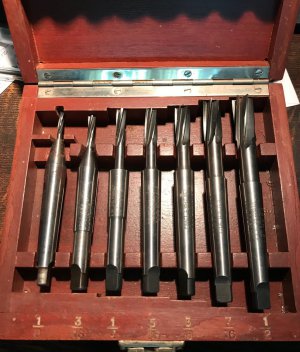- Joined
- May 7, 2023
- Messages
- 1,535
Different sized tapers have different amounts of holding power per sqin of surface area and different angled tapers result in more or less grip.I've often wondered why each Morris & B&S taper has to have been made at a different angle.
Varying the angle to the size gives a uniform hold in regards to the work envelope of the different sized drills/cutters for that MT#.


